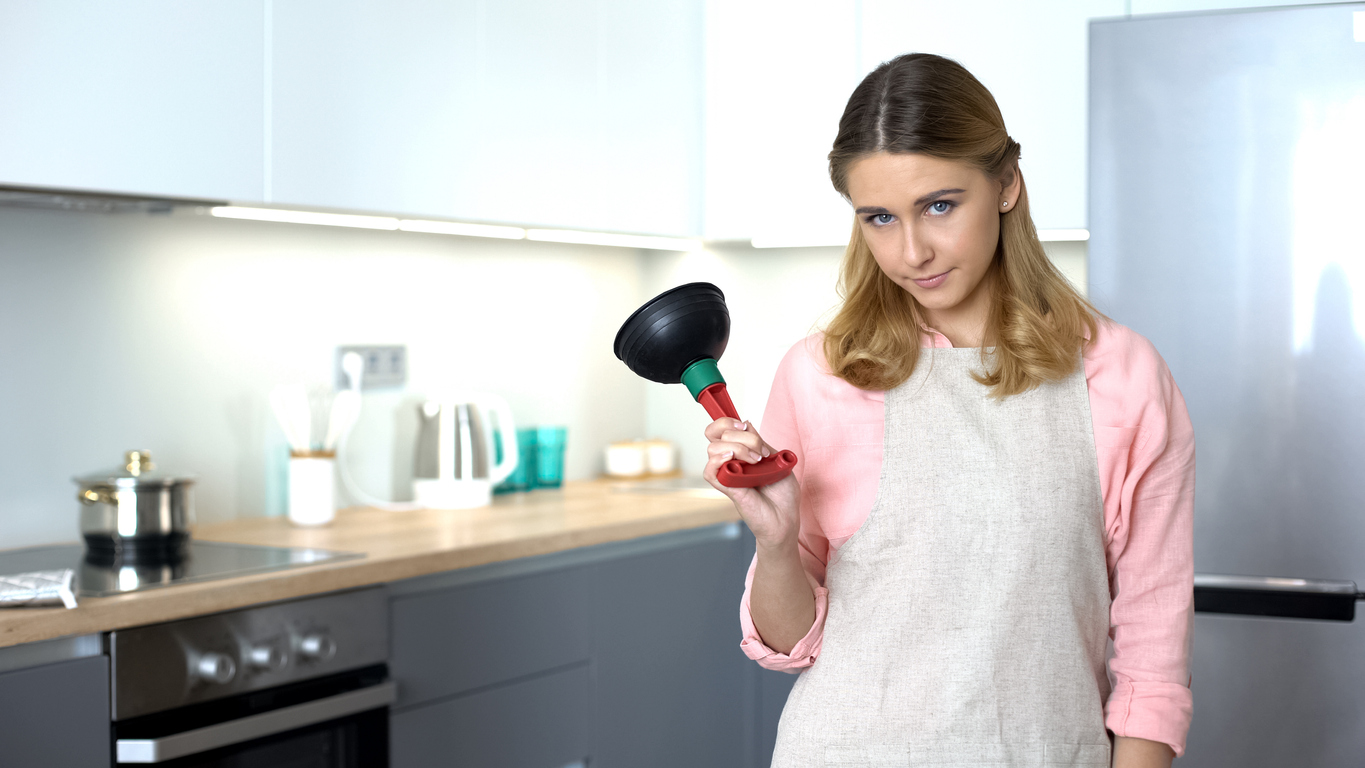We have all experienced a clogged kitchen, bathroom or utility sink drain at some point in our lives. In fact, such clogs are one of the biggest reasons for calling a professional plumber. Most often, these issues are localized in the drain trap or branch drain of your sink. But sometimes they are deeper, more complex problems in the main drain or sewer line.
To help you avoid the costs associated with professional plumbing service, you can try some common methods of unclogging your drain, such as using a plunger or auger. Below, we list some DIY recommendations from the experts of Calgary Plumber & Drains.
Hot Water Trick
Many clogs in sinks occur because of a buildup of grease, soap residue, hair and tepid water. This debris gets stuck just beneath the drain opening in the drain trap. The trick is to release the buildup by melting it with boiling water. Of course, you can only do this in a sink with metal pipes. Do not pour very hot water through PVC plastic pipes as liquid over 175 degrees Fahrenheit will soften the pipes.
To try this method of unclogging a sink, heat a gallon of water in a large pot on your stove. Slowly pour the boiling water directly into the drain opening. Never pour the boiling water directly onto porcelain. After pouring it down the drain, turn on the faucet and see if the clog broke loose. If it did not, try using a drain plunger.

Plunging Your Drain
Every household should have a cup plunger for clearing clogs in sinks, showers and bathtubs. This is different than the flange plunger used for toilets.
Your first step before plunging a bathroom sink or tub is to seal the sink overflow outlet with duct tape or a damp rag. This outlet is the small opening or holes located just beneath the rim of the sink bowl. In a bathtub, this opening is at the front of the tub, just beneath the faucet. Then, for a clogged kitchen sink, remove the basket strainer. In the bathroom sink, remove the drain stopper.
Before plunging, fill the basin with several inches of water. Water is necessary to enable the plunger to form a tight seal around the drain opening. Once you have a good seal, use quick plunging movements. Pump the plunger up and down. If you have a seal, you may hear movement in the drain as you apply the plunger and create a vacuum. Once you think the drain clog is cleared, run the faucet for a couple of minutes to move the debris toward the sewer. If you cannot clear the drain with a plunger, it is time to try a sink auger.
Using a Sink Auger for Difficult Clogs
A sink auger is also called a drain cleaning snake, drum auger or canister auger. If someone tells you to “snake the drain,” they are referring to using an auger.
First remove your drain stopper or drain basket. Then, follow the auger’s instructions after snaking the cable into the drain until it stops at the clog. Your objective is to break up the clog by working the cable through it. When you pull the cable out of the sink after working the clog a bit, it may have a large portion of the clog stuck on its end. Sometimes this method takes repetition to break the clog apart and clear the drain.
If you do not access the clog using a drain snake, the clog is possibly farther into the pipes. In these circumstances, it is best to call in the professionals for help.
Should I use chemical drain cleaner?
You should try to avoid using chemical drain cleaners. They are harmful to the environment and can damage your drain pipes. These chemicals are also deadly, endangering children and pets when kept in a household. Even more importantly, chemical drain cleaners rarely break up stubborn clogs. Then, when the clog remains, you are left with caustic chemicals in your sink’s standing water. These chemicals can damage your skin, eyes and respiratory system, particularly if you have to bail the water out of the sink by hand.
